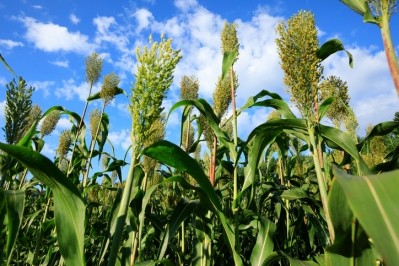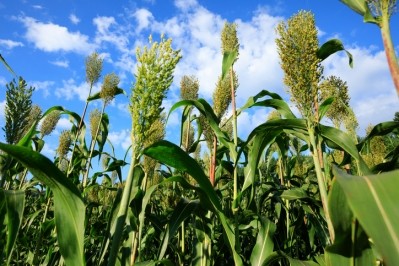Feed grain stocks, predicted acreage brings price bump

The US Department of Agriculture (USDA) provided a look at current US feed grain stocks and potential feed crops plantings Thursday with the release of its grain stocks and predictive planting reports.
“Numbers were below expectation on the acreage side, but they were above expectation on the stock side and the upward price from the acreage should have been negative on the stocks side,” Chad Hart, associate professor of economics, crop markets specialist and extension economist with Iowa State University, told FeedNavigator. “There is more product still sitting in storage in the country [than anticipated,] but when you look at the balance, the cut in production is more than enough to handle the larger stocks that we find ourselves with in both corn and soy.”
“From the crops perspective it was a great day,” he said. “From the feed perspective, it was a challenging day, but at the end of the day prices are still relatively good.”
Total acreage to be planted in grains for the coming growing season fell from 319,147m acres in 2017 to 317,989, he said. However, the swing is not as large as some have been in the past decade.
“Between 2014 and 2015 we saw about a 7.5m acres [drop] in principle plantings and back to 2011 and 2012 we saw a 10m acre increase,” he said. “The 1m is actually a relatively average change.”
Even with the potential reduction in planted acres, there remains a large store of feed grains, said Hart. “We’ve got plenty of feed available even through prices are jumping, but there are still good buys and looking into the fall [there may be] tighter prices with less new feed coming down the line,” he added.
However, in with the drop in acres planted if the forecast crops of corn and soybeans hit trend yields they would be the fourth largest corn and third largest soybean crops the US has seen, he said.
Overall, stocks of most stored feed grains fell from the same point in time last year– except corn and soybeans, according the USDA. Soybean stocks rose 21%, while corn increased by 3%.
Planted acres for the two primary feed grains dropped in favor of planting additional spring wheat and cotton, the department said. Acres expected to be planted in oats and sorghum increased although predicted plantings for barley dropped.
Looking forward, weather will be an important element to watch for feed users, said Hart. “That’s the biggest thing we watch here, especially for the feed market,” he added.
“The beauty of the situation is we’ll have something to watch which will tell us a lot about where the feed prices will be especially in the southern plains,” he said. “We can watch drought [conditions] and know that will show up in prices as we look months down the road.”
Feed crop acres
Prior to the release of details on the potential area to be planted in corn and soybeans there was an expectation that corn acres would drop slightly and that soybeans would increase, said Hart. “Farmers are pulling back on acreage in total,” he added.
“We’re going to plant a little less than usual and we saw strength in other areas,” he said. “We saw some increase in spring wheat, and cotton, and sorghum, and smaller acreage in corn and soybeans, much smaller than what trade was expecting.”
The drop in acres caused a bump in market prices for corn and soybeans, he added.
The overall drop in planted acres and the change in production away from corn and soybeans to grains like sorghum, oats or wheat likely is a response to several years of low feed grain prices and concerns about the weather, he said. “That drought situation in the southern plains continues to linger there and we’re seeing farmers being a little more defensive in their planting strategies right now,” he added.
Parts of the Great Plains have been seeing dry weather for some time, said Hart. States like North Dakota upped their spring wheat acres, while Kansas and Missouri were among those to look toward sorghum.
The predicted planting plan marks the first time that market conditions have caused more soybean acres to be planted than corn, he said. “This is a unique spot in time – soybeans were traditionally thought of as the secondary crop and now it’s taking a more leading role,” he added.
However, the oilseed tends to be less expensive to plant and produce, he said.
Acres planted in corn fell 2% or about 2.14m acres from 2017, the USDA said. Soybean acres dropped 1% to 89m acres.
Total wheat acres increased 3% to 47.3m acres and cotton plantings increased by 7%, the department said.
Grain stocks details
Overall, corn stocks as of March 1 this year were 8.89bn bushels, a 3% increase from the previous year, said the USDA. The disappearance rate from December 2017 through February 2018 was slightly below the pace previously set during that window.
Similarly, soybeans in storage amounted to 2.11bn bushels an increase of 21% from 2017, the department said. Total disappearance during the December–February window was 1.05bn bushels, a drop of 9% from the earlier period.
Sales of the feed crops have been slow this year and the pace of exports, especially for soybeans has been even slower, said Hart. However, one potential outcome of the positive market response to the drop in planted acres means that prices may be somewhat better for producers looking to sell feed grains now.
“It’s giving new crop producers the chance to move some of that crop to move at a better price,” he said. “Corn was up $0.10-$0.15 and soybeans were up $0.20 on the board and that could be the jump in cash sale prices – we’ve got bigger stocks, but may get better prices to work with over the coming weeks.”
Total wheat stocks fell 10% from the amount in storage a year ago, the department said. However, the amount of the grain that disappeared during that period also fell.
The same pattern played out for several other feed grains as stores of barley, oats and grain sorghum were below the amounts held in March of 2017, said the department. And the amounts of the grains that disappeared from December to February were reduced when compared to the previous year.
The shrinking of both stock levels and slowing of disappearance indicates that there were smaller stocks of those grains, said Hart.










